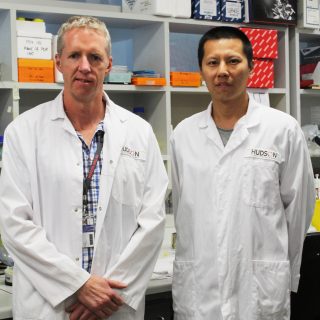Treatment type: Precision medicine
-
Baby’s first breaths of life captured for the first time
For the first time, doctors and researchers have captured moving ultrasound images of the lungs of newborn babies as they take their first breaths. The world-first research, involving Hudson Institute of Medical Research, Monash University and the Royal Women’s Hospital, is a breakthrough in understanding how human lungs transition from the womb to taking the… Read more

-
NHMRC Fellowship success
Hudson Institute has had outstanding success in the recent National Health and Medical Research Council (NHMRC) Fellowship and Development Grant announcements.… Read more

-
Ovarian cancer screening test underway for 300 patients
A clinical trial of a screening test developed by Hudson Institute scientist, Dr Andrew Stephens to detect ovarian cancer in its early stages is about to start in a large group of Victorian and South Australian women, thanks to funding from the Ovarian Cancer Research Foundation (OCRF). About 300 women will be recruited to the… Read more
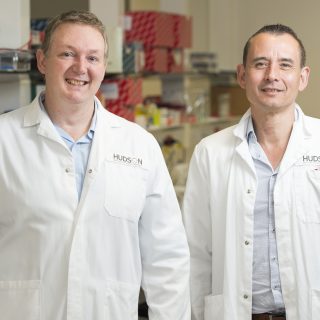
-
Towards an early detection test for ovarian cancer
The Active Ratio Test represents an exciting step forward in innovative ovarian cancer research. Should it be successful, a test as simple as taking a swab or blood sample will result in the early detection of ovarian cancer in women who otherwise exhibit no symptoms. Vague and misleading symptoms, combined with the need for invasive… Read more
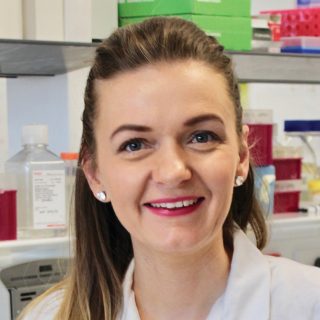
-
PhD Scholars program trains paediatric precision medicine leaders
A new PhD scholars program in paediatric cancer precision medicine has been established at Hudson Institute of Medical Research with co-funding from the Children’s Cancer Foundation. The program will train the next generation of scientists in advanced functional and structural genomics, development of patient-centric preclinical models, bioinformatics analytics and translational research with the aim of… Read more
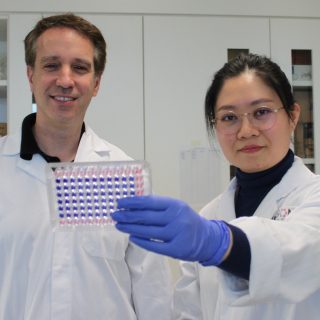
-
Hope for ovarian cancer treatments
Precision medicine is providing new hope for patients with ovarian cancer, the most common cause of death from gynaecological cancers. Only 3 out of every 10 women diagnosed with advanced stage ovarian cancer will survive after five years. These statistics haven’t improved in 30 years, but precision medicine approaches are opening up new possibilities. While… Read more

-
Boys, girls and intersex conditions
Hudson Institute researchers are closer to understanding the fundamental processes that make embryos develop as male, helping the 1 in 5000 babies that are born intersex.… Read more
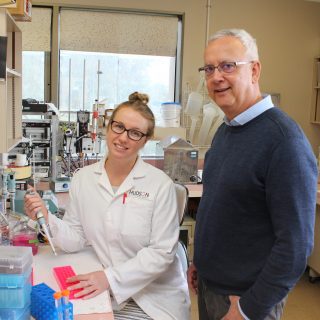
-
Genetic explanation for intersex provides hope
A study led by Professor Vincent Harley and Dr Daniel Bird examining the genetic causes of intersex, where a person is born with characteristics that are not clearly male or female… Read more

-
Preventing gestational diabetes
Early career researchers Dr Stacey Ellery and Ms Aya Mousa have won the MHTP Research Week ECR speed networking event, receiving a $10,000 grant to progress their research idea.… Read more

-
Biomarker offers hope for diagnosis of early stomach cancer
Scientists at Hudson Institute of Medical Research have identified a family of genes that could more accurately detect stomach cancer in its early stages to help improve survival rates. Stomach or gastric cancer is the third leading cause of cancer death worldwide. It is caused by the abnormal growth of cells in the lining, or… Read more
